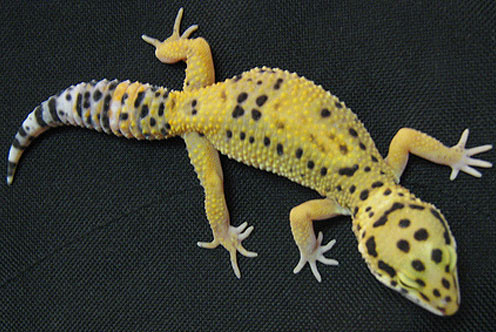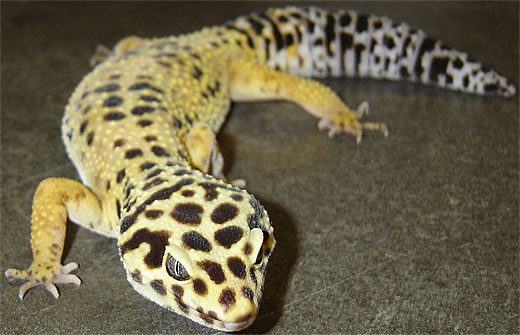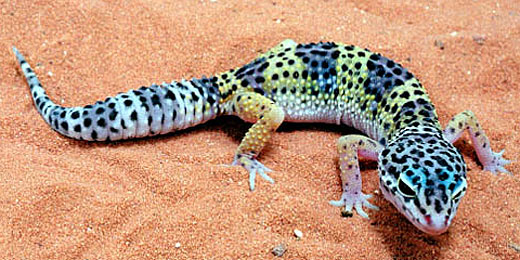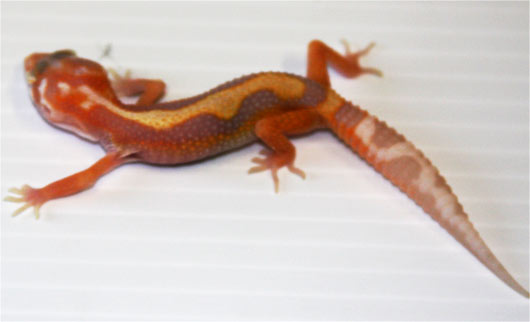Leopard Gecko – Bright Spotted Desert Lizard

The leopard gecko, which is also sometimes referred to as the panther gecko, is a medium sized lizard that has a spotted body, a large head and can be a variety of bright colors. Usually between 2.6 to 3.3 inches (6.5 to 8.4 cm) long; they are considered heavy for a lizard of that length and can weigh anywhere between 1.5 to 2.2 ounces (45 to 65 g). They can be found in the southern part of Central Asia, Afghanistan, Pakistan, Northwest India, and parts of Iran; living mostly in dry rocky regions, dry grasslands and deserts.

Leopard geckos are known to go into a semi-hibernation, known as brumation, during the winter; during this time, they live underground and live on fat stored from warmer months. They actually go underground or under rocks during the day all year round because of their nocturnal lifestyle. When they come out at night, they will hunt their food (insect larvae, moths, spiders, crickets etc.) in the same way a real leopard (as in the cat) would; stalking their prey until they find the opportune time to strike.

Leopard geckos are one of the few remaining species of gecko that has eyelids, a trait that indicates a lack of evolution in the species, but what it lacks in evolution, it makes up for in defense mechanisms. The leopard gecko is prey for things like snakes, frogs, and foxes, so it’s staying underground during the day is partially a means to avoid getting eaten. When they do encounter predators, they will hiss to ward them off, and if that doesn’t scare the attacker then they resort to fleeing from the advancing predator. It will then shed it’s skin if necessary to lose any scent markers it may have; finally, if caught, it can voluntarily detach it’s tail to free itself and make it’s escape quicker. The tail will regenerate quickly, but will never be the same. And it is where they store a good deal of their reserve fat.


Due to their highly variable coloration, leopard geckos have become popular as pets, but due to their wild instincts, they must be fed live food so that they can experience the hunt. Despite it being prey for larger animals and pets for humans, the leopard gecko still has a thriving wild population.

